Each week I typically highlight a handful of crowd-funded projects within my ‘Week in Review’ series. These projects are almost always sports and fitness related, as that’s where most of my interest lies. In the case of these projects, the reason why they end up in that section is that they don’t have anything concrete to show me. Otherwise, they’d likely end up as a full-blown post.
As I’ve stated before – I have a general rule that unless a crowd-funded project can physically show me the product (in my hands) then they don’t ‘get’ a full post. The product doesn’t actually have to work 100%, but I need to be able to decide what’s marketing and cinematic BS, versus real stuff. And the best and only way to do that is to hold it physically.
I recognize that might be a high bar to reach. But I put that issue in the category of “their problem” and not “my problem”. A number of companies have reached that bar previously, so it’s certainly attainable if you want it.
But what about projects that don’t have units available? How do I evaluate whether or not I’d personally back them? Well, let me walk through it.
I should point out that all these thoughts are focused on technology projects – largely sports technology projects, and generally projects that are seeking large sums of money. I’m not here to talk about music/film projects, or sewing a sweater.
What platform are they on?
The first thing I look at is which crowd-funded platform they’re on. The two biggest are Kickstarter and Indiegogo. Kickstarter is the most well known. It has many more restrictions on projects including where the creators can be from, as well as additional gates and barriers to entry. Whereas Indiegogo is basically wide open. They have virtually no barriers to entry.
Cost-wise for companies, Kickstarter tends to be more pricey. They take a 5% cut and then they leverage Amazon for payments, which takes another 3-5% cut – depending on a lot of factors (credit card, country, etc…). Meanwhile, Indiegogo takes a 4% cut plus 3-5% for credit card payments – so as low as 7% total.
In general, cracking open the Kickstarter page and browsing around is a clean and comfortable experience. It ‘feels good’. Whereas going to Indiegogo often can feel a bit like walking through the wrong part of town.
While there are no doubt many successful projects on Indiegogo (and I’ve backed many projects there too), the reality is that the lack of barrier to entry means that the risk profile is much higher there. I immediately reduce the viability of a project if it’s on Indiegogo versus Kickstarter. It may be harsh, but it’s also the reality.
The reason is twofold. First it tells me that they are either cash-strapped, or risk-strapped. Meaning, they either don’t have the cash to take the few extra percent hit on processing fees. Or they’re too risky that Kickstarter is, has or will reject their project.
But you say that Kickstarter limits the country of the developer? Yes, they do. But many international companies have and can easily get around that by placing an ‘employee’ in an allowed country. Meaning, if you can’t place a single employee (cough, grandma) in that country, then I have some doubts about your ability to sustain support for your product long term. Or to bring to market a product that will more than likely require partnerships in many countries for manufacturing and design.
Some might try and argue that Indiegogo aims to have a long-term relationship with the company coming back to launch more products on Indiegogo. I’d ask: Is that what you want? Shouldn’t these platforms be for up and coming companies and not just PR stunts? If a company can’t launch future products by itself, then isn’t that a warning sign?
Finally – what about ‘self-built’ platforms? There are a handful of companies using those out there. For example, Skylock this week. Well, I stay away from those like the plague. The reason is that there’s zero accountability there. We’ve seen that with Earl, which is a bit of an ANT+/Bluetooth enabled Kindle-like tablet that has some really cool hardware specs. But by going to their own platform they’ve kinda closed the door a bit on themselves and have provided rare updates and at times questionable disappearance of updates/details/comments. The project was due last summer, and it’s still not in backer’s hands.
Said differently, if you think that Indiegogo is like walking in the wrong part of town, then those on self-hosted platforms is no different than just walking up to a stranger and giving them your money and walking away.
What are they trying to build?
Next I look at what they’re trying to build. How complex is it? And how many ‘new’ things are there in the product.
To do that I break down the components of the product into the core technology pieces. For example, look at the IOLITE goggles from this week. This product basically can be divided into three pieces:
1) The LED display system on the front of the goggle
2) The GPS pod that goes into the back of your swimcap
3) The software that runs on both the desktop and the goggle
In this case, it’s actually a very straight forward product from a technology standpoint. GPS receivers that are of this size are completely normal. The battery pack is also completely normal. The software being used is effectively something that’s been done for the better part of a decade in sports and fitness GPS units: Drawing a route and keeping you on that route.
The only ‘new’ thing in the product compared to existing technology is the underwater LED system, and applying that to the front of the goggle. Displaying LED’s underwater is hardly an unheard of task, so the real risk there is long term use of the components in swimming and salt-water. Primarily the interconnects and ensuring it doesn’t suffer corrosion.
There’s also a tiny bit of risk in ensuring that the software for ‘course correction’ isn’t overly sensitive or what-not, but that’s really rather small.
Thus even if I hadn’t seen this project in person – it’s a low-risk project. Take the projects you’re looking at and break them down piece by piece and think about how common those components are.
What is the rest of the industry doing?
Following right along looking at the project components is looking at what the rest of the industry is doing. So again, you start with the components of the project. A great example of using this methodology is the The Dash by BRAGI that was announced a few months ago. In that case I started to break down all the components in their system. These components generally aligned to the following core features:
1) Tracking heart rate data via optical sensor in your ear
2) Tracking/recording of fitness data (pace/cadence/steps), also from the unit in your ear
3) Music storage and playback, also from the unit in your ear
Those are the big three, but there are many more sub-features. The concern I have there is you look at those big-three, focus on the fact that they’re delivering this all in something the size of two little headphone earbuds.
So I ask myself: Who else does this today? More specifically: Who else can do all those functions in a single package today without any extra cables or external battery (and that’s the biggest piece).
And the answer is resounding clear: Nobody.
And not just nobody for all three – but rather, nobody for any of those individually. So this means that the company has managed to break ground on three core technology areas, and do it in a package that’s smaller than anything else ever seen or rumored. That seems like a pretty big leap to me.
Let’s look at another example from this week – the CENTR camera, which is a 360* HD camera that could be used as an action cam. In this case, the concept of a 360* action camera is hardly unheard of. Just look at my CES posts for a ton of these aiming to come onto the market.
With CENTR I broke down all the components and features, and individually there’s very little there that’s ground-breaking by itself. That’s actually a good-thing for sustainability and risk. If I were to compare this unit to the numerous others that want to be on the market, they all have fairly similar specs and features. Thus, from an industry standpoint they are inline with others and the risk technologically is low.
Which isn’t to say stay away from those who push the boundaries. Rather, to ensure that they aren’t trying to boil the ocean. If a product claims to be on the bleeding edge of a multitude of technology advancements and nobody else in the industry is doing even one of those components – then 99.999% of the time they’ve bitten off more than they can chew.
Where are prototypes, how do they look, who’s seen them?
Next I look at what prototypes are available, and who’s seen them. I recognize that I’m not the biggest pony in town. Rather, there are bigger gadget-focused sites like Gizmodo, Engadget, and The Verge. From a PR perspective, those sites would be appealing to try and get exclusives or first-looks from (not so much for sports technology, but things like action cams). So I check them out and look carefully at the photos. Have they actually had hands-on time with it?
If none of the major tech sites – or any site for that matter, has had hands-on time with the unit, then more than likely that’s reason for concern.
Another example of this was the Hammerhead bike navigation project unit last fall (which is now aiming for a 5-month delivery delay for next September). In this case, they were very persistent in trying to get me to write a post on it. We had calls on the subject and traded many e-mails. However, they were unable to put a device in my hands. But there’s an even more important detail here: They were unable to put a device in my hands while at Interbike.
That means they were unable to show me a prototype device at the biggest North American bike product event of the year, with the place crawling with press (read: opportunity). I told them my schedule was wide-open. I explained I didn’t even have to see it working, I just had to physically touch it.
In their case, they had 3rd party press people at Interbike, but no product. They also had no plans to be there themselves. That’s very telling because it means they aren’t in tune with the industry they’re going into. For example, about 1/3rd of the meetings I have each year at Interbike/Eurobike/CES are actually for companies you’ve never heard of, developing products a year+ away. They’re quietly meeting with potential partners, investors, and even select media. Showing concealed prototypes in everything from private hotel rooms to off-hall bathrooms and fast food joints.
Sometimes companies will go to smaller tech fair’s and events, often associated with universities. That’s a great place to be able to see the product first hand. If they’ve done some of that – that definitely helps because most of those gatherings will attract highly critical people who will usually instill a reality check.
So when you look at a just announced product – look at the links at the top of the crowd-funded page carefully and see if any of them have actually touched it. And if so – what were their impressions. If nobody has unique photos and experience…beware.
What are their timelines?
Next, I look at their timelines. When do they promise the product, and what work has been done thus far to get there?
If they’re just using Kickstarter as a marketing machine, then they’re likely to have shorter timelines. An example of this is Wahoo Fitness. Last year they launched the RFLKT+ in August on Kickstarter with timelines for delivery a little over a month later. Practically speaking there was little reason to use Kickstarter other than marketing. It was basically a completed product using their existing production facilities. Whether or not their Kickstarter campaign succeeded was really irrelevant. It only affected company pride – likely the reason they added the ‘KICKR level’ at the end to increase total funding by allowing people to basically buy a KICKR and get a RFLKT+ (thus increasing their funding by ~$1,100 at a time instead of ~$100 at a time). So from a timeline standpoint these sorts of marketing-driven products tend to have very short timelines that are usually pretty easy to trust.
On the flip side, if they are like The Dash and have nothing to hand people, while also having major technology advancements. Their established a timeline of September (some 4-5 months later) is unrealistic. Whereas the CENTR camera being next February (2015) seems rather realistic given existing industry examples.
You’ll also want to take into consideration company and manufacturing location. For example, there’s a reality that when it comes to the business world – very little gets done in Europe between July and August. It doesn’t matter how hard a little startup team works, if their upstream larger/other partner companies aren’t there then it won’t really matter. The same is true of companies that are dependent on manufacturing in China during the January-March period where there are known factory shut-downs for a few different holiday periods. Everything shuts down…period.
Thus if their time schedules have them hitting manufacturing right at the start of Chinese New Year, then question that. And if they say they’re going to ship you an unseen product in just a couple months – question it too.
Finally, one area I do look at is how those timelines mesh with other industry events. For example, buying into the CENTR camera would actually be a slightly poor bet. The reason is that the timelines today have it for February. This is just a month after CES, when any cameras that would be coming out would be announced. So effectively you’re buying into a camera today for next spring (because there will be delays), versus buying into cameras announced in January 2015 for next spring (2015). In the cycling world, that’d apply to Eurobike/Interbike in the late August/September timeframe. The running/tri timeframe tends to be focused on Spring/Fall launches.
My advice to companies wanting to crowd-fund:
So, you’re a company in the sports technology arena and want to launch a product? Great! Here are some nuggets to chew on.
Choose your platform wisely: As I noted above, Kickstarter is more respected. Going with other platforms sends red flags. Further, from a pure PR standpoint you’ll see higher engagement (read: articles) of Kickstarter projects from mainstream press than you will for Indiegogo projects. Saving 2-3% now on costs isn’t worth not funding your project, or missing out on tens or hundreds of thousands of dollars in funding because people are skeptical of your platform.
Ensure someone has access to your product: If you look at many of the most successful projects, they’ll have some component where (usually) a media entity was allowed some brief hands-on time. This has two benefits. One, it gives confidence to consumers that your product is real. And second, it gives a media outlet something more than PR copy to go off of. Most worthwhile media outlets want that, because it gives them a unique angle. If you can’t put your product in front of someone for a short demo (no matter how rough the edges are), then why should your future consumers believe you?
Don’t use it just as a marketing machine: I think most consumers are starting to see through this a bit. While this can sometimes work, it has high risk associated with it when it fails. It’s visible. If you’re an established company and you launch a new product on Kickstarter and it flat lines, then you’ve basically told the rest of the industry that product idea in its current form isn’t potentially viable. And you look silly.
The funding period is an audition: You need to remember that when people land on your funding page they’re immediately looking at how many backers you have, how many days you have left and then the rest of the project information. If you have no/low backers, that’s a red flag. Another red flag is lack of comment responses. After looking over the project page I’m then looking through comments that backers have left – is the company quickly answering them? Finally, I’m looking at updates during the funding phase. Are they listening to backer feedback and addressing common questions?
Update early, update often: If you start a project, your entire existence in life until the completion of that project should be on providing frequent updates (and delivering the product). This is especially true in the funding phase. I think the best example I’ve ever seen of this is still the Bia founders. They rang the ‘please help fund our project’ bell every day and every moment they could with updates to their current backers on every social media channel known to mankind until completion of the funding phase. At times, perhaps it was annoying. But, it also got the project funded. Sometimes you have to be a bit loud if you want to get your product out the door.
Understand crowd funders are highly critical: In line with ‘your life is the project until completion’, keep in mind that people will give you unending critical feedback if you appear to not be focused on getting the product they paid for into their hands. I remember a product back a bit ago where the founders touted going on a nice vacation mid-project in the same update they announced a delay. People assume the vacation causes a delay, and assume their money is funding your vacation. Seriously.
Remember your Kickstarter page is there forever: To that end, remember that if you do a poor job at communicating and upset backers, or if you screw the pooch some other way, then remember that for most people searching for your product/company on Google – the 1st or 2nd page they’ll find for years will be your Kickstarter page. They’ll pore through angry comments and quickly run away from your product. Thus if you fail to engage there and then, then people will run away even if you’ve fixed issues down the road.
Ultimately, crowd-funding is an incredible resource to assist in funding your project. Just be sure to use it wisely. Like any other power tool, you can hurt yourself with it if not applied properly.
—
And for everyone else – enjoy the ability to see products develop and all that goes on behind them. And understand that when you back a product on a crowd-funded site, that it’s more of a journey than clicking on a product at Amazon. There will be ups and downs (lots of downs typically), but you’ll usually get the chance to influence the product.
As always, I’ll continue to plop a random smattering of projects in my Week in Review, so definitely take a look to see if something is of interest. They often serve as a good barometer of what major companies might add to their products as well.
Thanks for reading!
FOUND THIS POST USEFUL? SUPPORT THE SITE!
Hopefully, you found this post useful. The website is really a labor of love, so please consider becoming a DC RAINMAKER Supporter. This gets you an ad-free experience, and access to our (mostly) bi-monthly behind-the-scenes video series of “Shed Talkin’”.
Support DCRainMaker - Shop on Amazon
Otherwise, perhaps consider using the below link if shopping on Amazon. As an Amazon Associate, I earn from qualifying purchases. It doesn’t cost you anything extra, but your purchases help support this website a lot. It could simply be buying toilet paper, or this pizza oven we use and love.


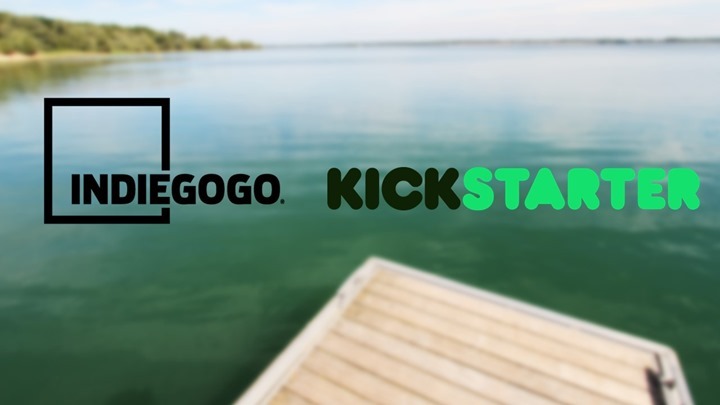
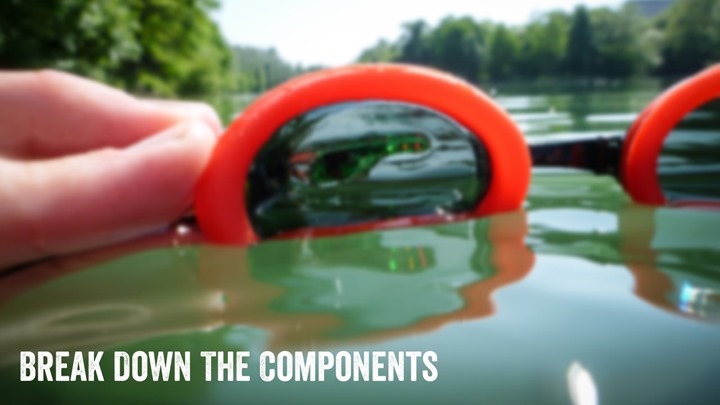
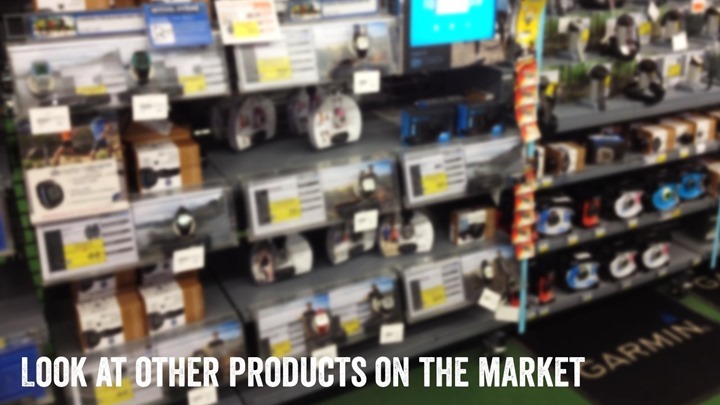
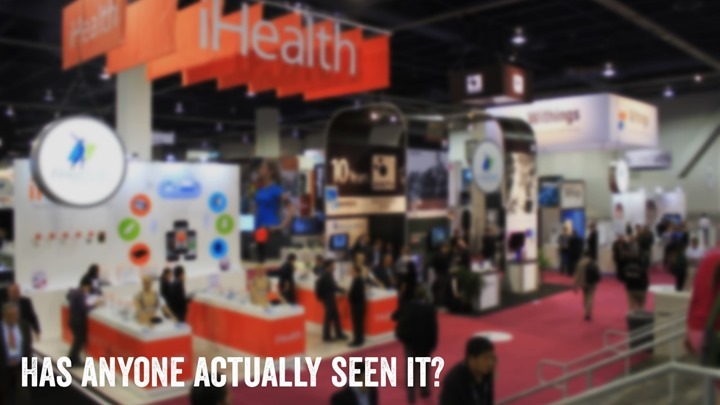
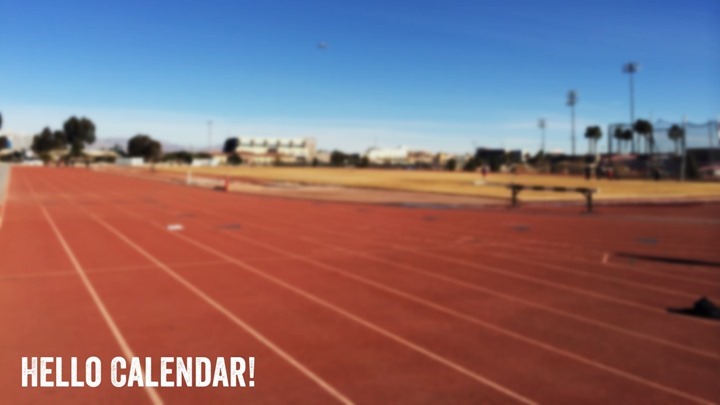
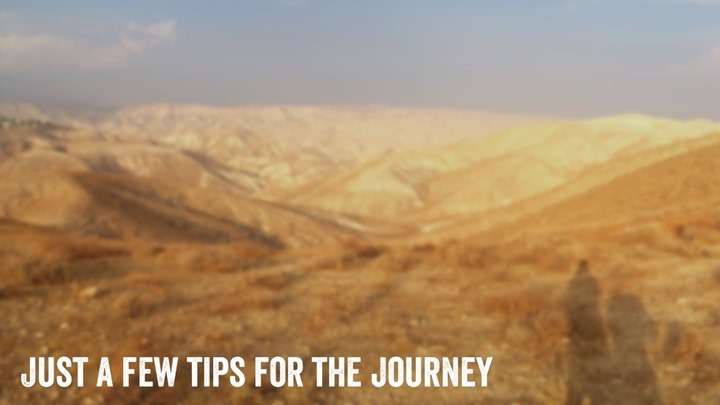
















Is the writing in the first pic correct?
It is now. ;)
Excellent!
I probably sound like a thousand other people, but…..
Thanks for all the great reviews and insight! I never miss a post!
Thanks for the thoughtful post Ray. After the Gobe fiasco I refuse to back projects on Indiegogo – you didn’t mention the instant funding on Indiegogo versus the Escrow approach on Kickstarter – which I believe is in-line with your comments of why you prefer Kickstarter to Indiegogo.
I was very pleased with my experience with supporting Misfit Shine (a project on Indiegogo) – but unfortunately that looks like a relatively rare case of a really good product, put together by a really good team, on some pretty close to planned timelines.
But the fraud component apparent, if not evident in the Gobe campaign, at least revealed as possible, makes Indiegogo an unacceptably dangerous place for me to put my money. I’d rather ‘miss the boat’ on a ton of cool cutting edge stuff, but also miss out on the complete duds and failures. In the end it means less ‘control’ over the future of sports tech perhaps but more money to buy ‘stuff that just works’ (to borrow one of your phrases) in full commercial production.
thanks for sharing this – very helpful and timely. I hope that sports entrepreneurs read it carefully!
Indiegogo does support the escrow way of funding too. Still agree kickstarter is better as they seem to weed out fraud better but has the disadvantage that they take a higher cut so a real campaign may just be on Indiegogo to be able to charge less while getting the same amount of money
Did you see the BSXinsight Lactate Sensor? I backed that one on Kickstarter. Curious why their was no mention on this one. Did you miss it?
Yup, aware of them – and actually had a number of good conversations there with them. I think they’re a smart group that’s on to something. However, it does sorta fall in line with being unable to get me a unit to try out.
There’s also the aspect that it’s a much harder thing to explain to most readers without being able to actually use the device. Said differently: I don’t like talking authoritatively about things that I’m not 100% certain on and understand all the details about because I haven’t used it yet.
What do you have against rainbow-farting ponies?
Yes, what indeed. As a breeder of rainbow-farting show ponies, I find the tone of this title offensive.
In addition to your list I’d add the the plausibility of the physiology behind the device.
To take the example of the Basic Insight Lactate Sensor mentioned above;
They boast of the technology being patented, but then don’t explain even the hypothesis of how it may work. They boast of the amount of science behind it, but then don’t link to any, even un-peer-reviewed, research.
The standard is what I’d expect from an aromatherapist.
Not to mention the video clip. They boast of having been to medical school, but don’t know where the blood supply and pain fibres are in fingers. I learnt that in my first year of medical school. Even if they got kicked out they should know that. Quite frankly, for stabbing one another in the pulp of the finger I’d happily use the spike on their eyeballs. I thought American medical schools were supposed to be quite good.
I’d never back something as woo as that. And I really hope they’ve given up medicine.
Good to know!
I had not even thought about crowdsourcing – me and Austin were throwing around the logistics of his business and their new product, and never once did crowdsourcing cross my mind. I am definitely bookmarking this and showing this to him later, I think you are a good resource as far as some of the tips you gave!
I received an Amiigo back in March. It was going on a year late for delivery. It was a big letdown for me personally but others might like it. One big issue was on their Indiegogo page and video they show continuous HR but in the final band delivery its only resting..at best. Up until a month or so ago they would go a month plus before giving backers updates, promise and miss ship dates over and over again..awful communication.
Remember if they fart rainbows they are unicorns, not ponies :-p (no one a burner?)
1) The LED display system on the front of the goggle
2) The GPS pod that goes into the back of your head ( ouch, that’s a bit extreme isn’t it. Don’t think I’ll be buying until it doesn’t need surgery to install it)
3) The software that runs on both the desktop and the goggle
Sometimes being a leader takes a bit of pain…
Perfect timing on this…and my frustration with the indiegogo project of Kreyos Meteor.
I’m not sure if this qualifies as fitness oriented, but it is clearly a running device:
It does have an included camera mount or action cam – maybe you can teach it to run behind you and carry your water bottle?
Whoops – didn’t do the link quite right:
OutRunner: The World’s First RC Running Robot
Sorry to pester you dude! I was just wondering how how far away you were from the Samsung Gear 2 review? :o)
Speaking of Kickstarter, do you have a timetables for reviews on Leikr and Bia watches yet?
My current thinking is Bia I’ll probably start mid June, once I get past this rush of bike units the first/second week of June (+ the running FR15). At which point I don’t think I’ll have any other run things on my list.
With Leikr, I still feel that it’s in the same category as my previous hesitation – it’s simply not competitive in today’s market at today’s price. Not even close, not even for half the price. So at present since I’m time-constrained I’m not planning a review unless something substantial changes – unfortunately.
Fantastic write-up! Somebody needs to police these crowd-funding sites which promise the world and deliver nothing: Amiigo, Aero, The Bragi Dash, GoBe, and the list goes on…
Mr. Rainmaker: Nice article, very helpful. Here is a question: how to you handle confidentiality expectations? I’m consulting later in June on a medical device and want to know how to reassure the stakeholders that they can disclose
details of their project. Sure, I’ve got to sign legalese. What else do say or do so stakeholders trust you enough to show you proprietary details? Thanks,
Signed. Slowazz marathoner.
Sometimes I sign standard NDA’s, but that’s about it really. Ultimately there’s a level of trust there. I’m very strict about not breaking embargo’s or NDA’s (some magazines/sites/etc… are less strict). I also tend to generally stay away from posting rumors in posts, rather instead only going for things that folks have given me the OK to publish about (i.e. undisclosed news).
But even then, I don’t have NDA’s signed for most of the major companies (Garmin, Polar, etc…). Typically only some really small start-ups that are worried. But that’s it.
Very fitting:
link to theoatmeal.com
link to arstechnica.com
Very interesting, and rather well put together.
Another interesting view of Kickstarter projects link to mobile.nytimes.com